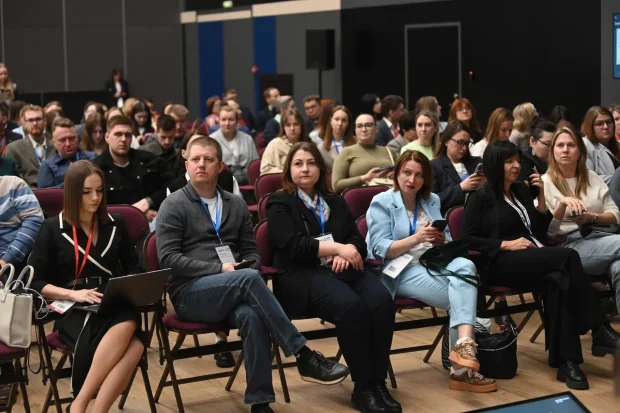Career guidance is going into «digital»

Staff shortages will remain a trend in the labor market, and against this background, effective career guidance activities aimed at schoolchildren are becoming particularly important. It, in turn, should shift from the traditional scheme of «test tour to the enterprise» to more familiar and convenient digital channels of information dissemination for young people.
This was discussed at the round table «Digital Services for the labor market: career guidance, recruiting, and employee qualification assessment», organized by the Association of Directors of Industrial Safety and SMART as part of the IX St. Petersburg International Labor Forum and the CUBE EXPO 2025 exhibition.
One of the reasons for the shortage of personnel is the initially incorrect choice of profession made by schoolchildren. As a result, almost 50% of graduates of universities and institutions of secondary vocational education (SVE) do not get a job in their specialty, said Oles Balabkin, Director General of the Leadership Project of the Agency for Strategic Initiatives Career.online, organizer of the All-Russian online marathon «Trajectory. School — SVE/HE — enterprise». He added that 58% of high school students did not decide on a profession 4 months before graduation, 70% of schoolchildren make this choice incompetently, 90% of children do not know what field they want to work in and do not know how to find the answer to this question.
Therefore, Oles Balabkin concludes, it is necessary to create conditions for schoolchildren to choose the right profession. This is how the online career guidance marathon «Trajectory» appeared, which helps students in grades 8–11 to form a career trajectory «school — SVE/HE — enterprise». Online broadcasts of career guidance interviews with employers and educational institutions, career guidance diagnostics on the Career.online platform are available to students participating in the marathon. The diagnostic results are available to enterprises and universities, which can start interacting with students interested in work and/or education based on it.
One of the global tasks today is to retain graduates of schools, vocational schools and universities, as well as young professionals, to work in their native regions. Meanwhile, according to the survey data of users of the Digital Assistant for Career Choice service, 55% of schoolchildren and students plan to build a career in a «non-domestic» region, 43% of young people do not see career development opportunities in their city and region. These data were presented by Natalia Aliyeva, author of the ProfStories youth vocational socialization project.
«Each region, of course, has its own individual situation, but in many ways the desire of young people to leave is due to poor awareness of the career opportunities available at the enterprises of the region,» Natalia Aliyeva emphasized.
The speaker called on employers, especially from industry, to change their approach to career guidance tools and increase their presence in the online environment.
«An employer’s communication with their potential future loyal employee — today’s schoolboy or student — should be built in a convenient way for the latter, that is, through online services and channels,» Natalia Aliyeva emphasized.
The same approach is followed by the Employment Center of the Lipetsk region, which has launched projects for the employment of graduates at the enterprise of the region «Care.Personnel» and «Personnel of the region». As explained by Svetlana Romanyuk, deputy director of the institution, these platforms accumulate data on all graduates of educational institutions in the Lipetsk region and on the personnel needs of local enterprises, which made it possible to find a job for almost every young person in their native region.
Digital services are used today not only for external career guidance, but also for the formation of a personnel reserve within the company. This area is becoming increasingly relevant for HR strategies of enterprises, as the cost of recruiting and adapting employees is increasing, and HR budgets tend to stabilize. According to Kirill Khramtsov, General Director of GCN LLC and a member of the Council for Professional Qualifications in the Mining and Metallurgical Complex, the cost of companies to attract and adapt one new employee today ranges from 0.1 to 1.2 million rubles. At the same time, an employee who does not understand his career prospects leaves the company within 2–3 years. The way out of this situation is to create an internal «labor exchange» that allows managers and HR to see the sources of candidates for positions within the company, and employees to see and plan their careers within the company, Kirill Khramtsov believes. It is absolutely realistic to make such an internal «labor exchange» entirely «digital», the expert says with confidence. As an example, he cited the Univertus platform he created for one of the industrial corporations. The system generates a profile of the position, compares it with the current position of the employee, offers him a choice of development categories and, depending on this choice, makes up a career track. After the introduction of this platform, the employee retention efficiency ratio increased by 15%, and the pool of candidates for the personnel reserve increased by 20%, Kirill Khramtsov said.